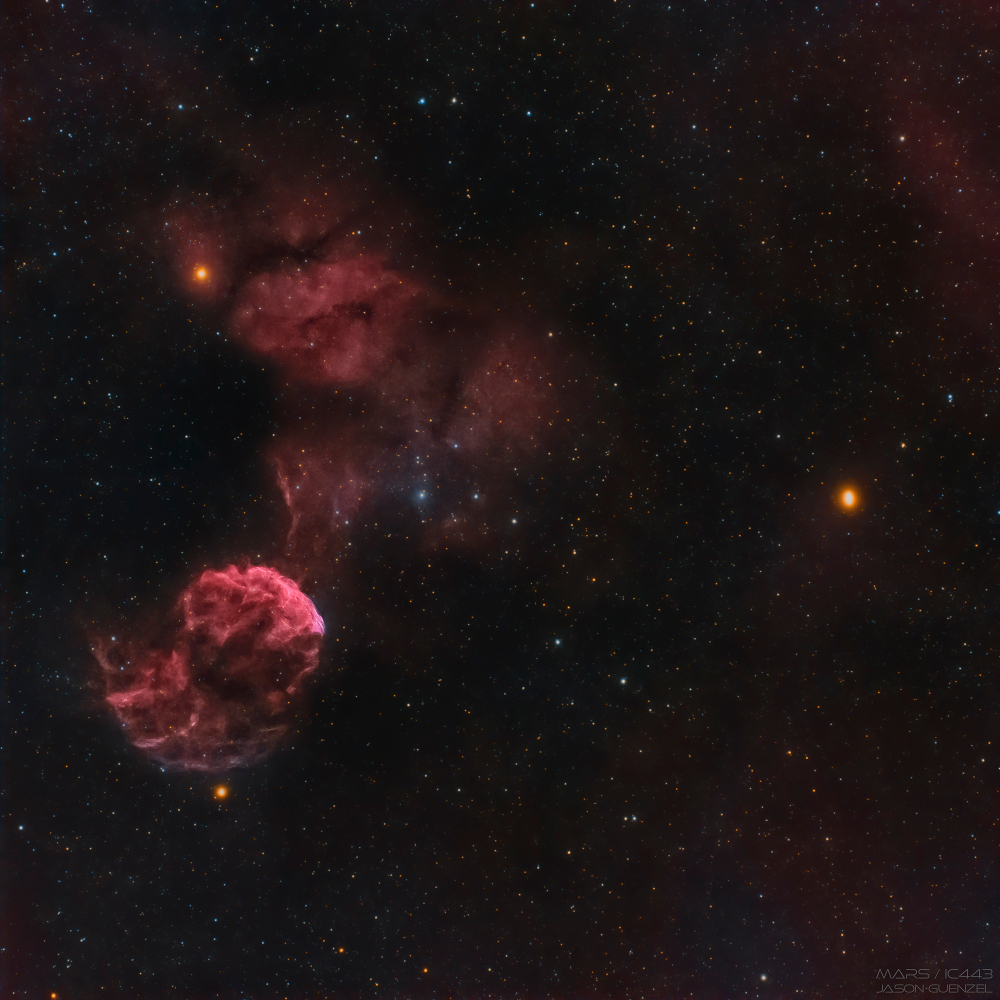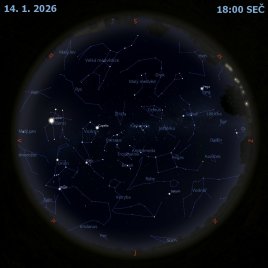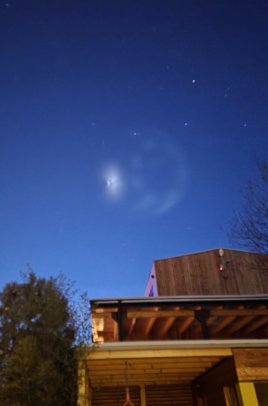Medúza a Mars

Uznání a copyright: Jason Guenzel
Na této půvabné scéně je vidět normálně slabá a prchavá mlhovina Medúza. V teleskopickém poli pod a nad Medúzou vystupují dvě jasné žluté hvězdy Mu a Eta Geminorum. Jedná se o chladné červené obry, kteří se nacházejí v chodidle nebeského dvojčete. Samotná mlhovina Medúza se vznáší od středu vlevo dole, je to jasný obloukovitý hřeben emise na kterém se houpou chapadélka. Kosmická medúza jsou součástí zbytku supernovy IC 443 ve tvaru bubliny, rozpínajícího se mračna trosek po výbuchu hmotné hvězdy. Světlo z tohoto výbuchu poprvé dosáhlo Zemi před více než 30 000 lety. Stejně jako její sestřenice v astrofyzikálních vodách Krabí mlhovina, i mlhovina Medúza má uvnitř zbytek zhrouceného jádra hvězdy, neutronovou hvězdu. Na teleskopickém snímku pořízeném 30. dubna je i Mars. Rudá planeta se nyní toulá časnou večerní oblohou a zde je vidět jak žlutě svítí na pravé straně zorného pole. Mlhovina Medúza je asi 5000 světelných roků daleko, zatímco Mars je nyní od Země téměř 18 světelných minut.
Seznam odkazů v popisu
- Twitter: Jason Guenzel @TheVastReaches: Mars Meets a Jellyfish
- Illinois.edu: TEJAT (Mu Geminorum)
- Illinois.edu: PROPUS (Eta Geminorum)
- HawAstSoc.org: Constellations: Gemini -- Twins who weren't Quite
- APOD: 2006-06-02 IC 443: Zbytek supernovy a neutronová hvězda
- Harvard.edu: Chandra: Supernovas & Supernova Remnants
- arXiv.org: Observation of Supernova Remnant IC443 with the Fermi Large Area Telescope
- APOD: 2018-03-17 Krab z vesmíru
- Harvard.edu: Chandra: IC 443: High School Students Discover Neutron Star Using Chandra and VLA Data
- EarthSky.org: It’s time to start watching Mars
- NASA: Perseverance’s Robotic Arm Starts Conducting Science
NASA Official: Phillip Newman Specific rights apply. NASA Web Privacy Policy and Important Notices
A service of: ASD at NASA / GSFC & Michigan Tech. U.
Odkaz na originální APOD


